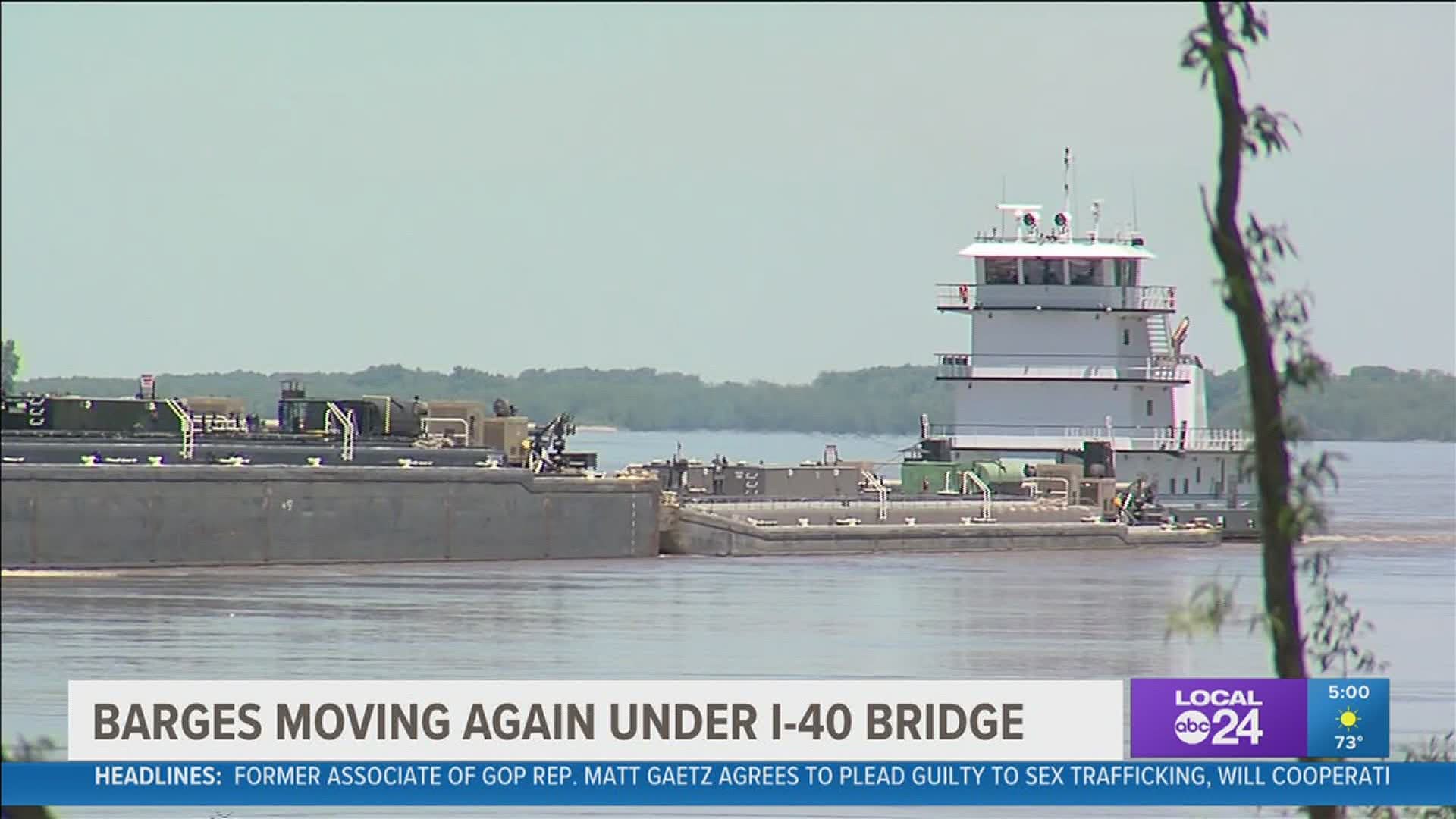MEMPHIS, Tenn. — Barges and boats are once again moving in the Mississippi River below the I-40 Hernando de Soto bridge in Memphis.
The U.S. Coast Guard said Friday morning that the waterway restriction has been lifted for the river. Traffic for vehicles over the bridge remains halted.
Meanwhile, Arkansas Department of Transportation and Tennessee Department of Transportation crews are working jointly to safely repair and reopen the Interstate 40 Bridge over the Mississippi River.
All this comes after a "crack" was found during inspections Tuesday, and traffic was halted over concerns about the safety of the bridge.
Read the full news release from the Coast Guard below:
The Coast Guard lifted the waterway restriction from mile marker 736 to mile marker 737 on the Mississippi River, Friday, in the vicinity of the I-40 bridge in Memphis, Tennessee.
The waterway is now open without restriction to all vessel traffic. As of Friday, there were 62 vessels and 1,058 barges in queue.
"Based on information provided to us by the Tennessee Department of Transportation, the Coast Guard has determined that transit under the I-40 bridge is safe for maritime traffic," said Coast Guard Capt. Ryan Rhodes, Captain of the Port of Memphis. "We appreciate the cooperative efforts of both the Tennessee and Arkansas Departments of Transportation, as well as maritime port partners, to ensure the safety of our waterway."
More information on this story can be found here. For more information follow us on Facebook and Twitter.
From the Tennessee Department of Transportation:
The Tennessee Department of Transportation (TDOT) and the Arkansas Department of Transportation (ARDOT) are working together to safely repair and reopen the I-40 Bridge over the Mississippi River as soon as possible. After three days of intense and thorough analysis, we have the following information to share.
- The Department met with our Structural Team, which included TDOT, ARDOT, FHWA, TDOT’s consultant Michael Baker, Inc. (MBI), and ARDOT’s consultant HNTB to go over the details of the bridge modeling.
- There was a consistent message that, above all, the safety of the public was paramount, and the priority was to 1) open the bridge to river traffic 2) open the bridge to vehicular traffic 3) look at the bridge for long-term issues related to the original failure.
- There is no indication that the bridge is continuing to deteriorate. We went through an extensive bridge modeling program to be sure it was safe for river traffic.
- We are performing additional modeling with different analytical tools to ensure quality control to have a redundant analysis before we make a final determination that the bridge is structurally stable.
- The US Coast Guard made the decision to reopen the Mississippi River to traffic at 9:00 AM CDT this morning.
- The design team is investigating the benefits of installing a steel plate to beef up the fractured section and thus increase our factor of safety for the existing configuration.
- The design team is working on an interim repair design concept that contemplates using steel rods that would be attached to the bridge and span over the fractured section, and provide the needed strength to reopen the bridge to vehicular traffic.
- The interim repair would allow time for a new bridge component to be fabricated to replace the bridge's damaged 37’ long section.
- ARDOT is continuing to monitor the fracture area to ensure that no additional fractures are propagating from the existing section.
- FHWA has requested that the section of damaged steel be preserved so that a detailed forensic investigation of the plates could be done later.
- TDOT is working with the University of Memphis to see what could be gained from some of their research activities on the bridge that might have captured some information regarding the fracture.

